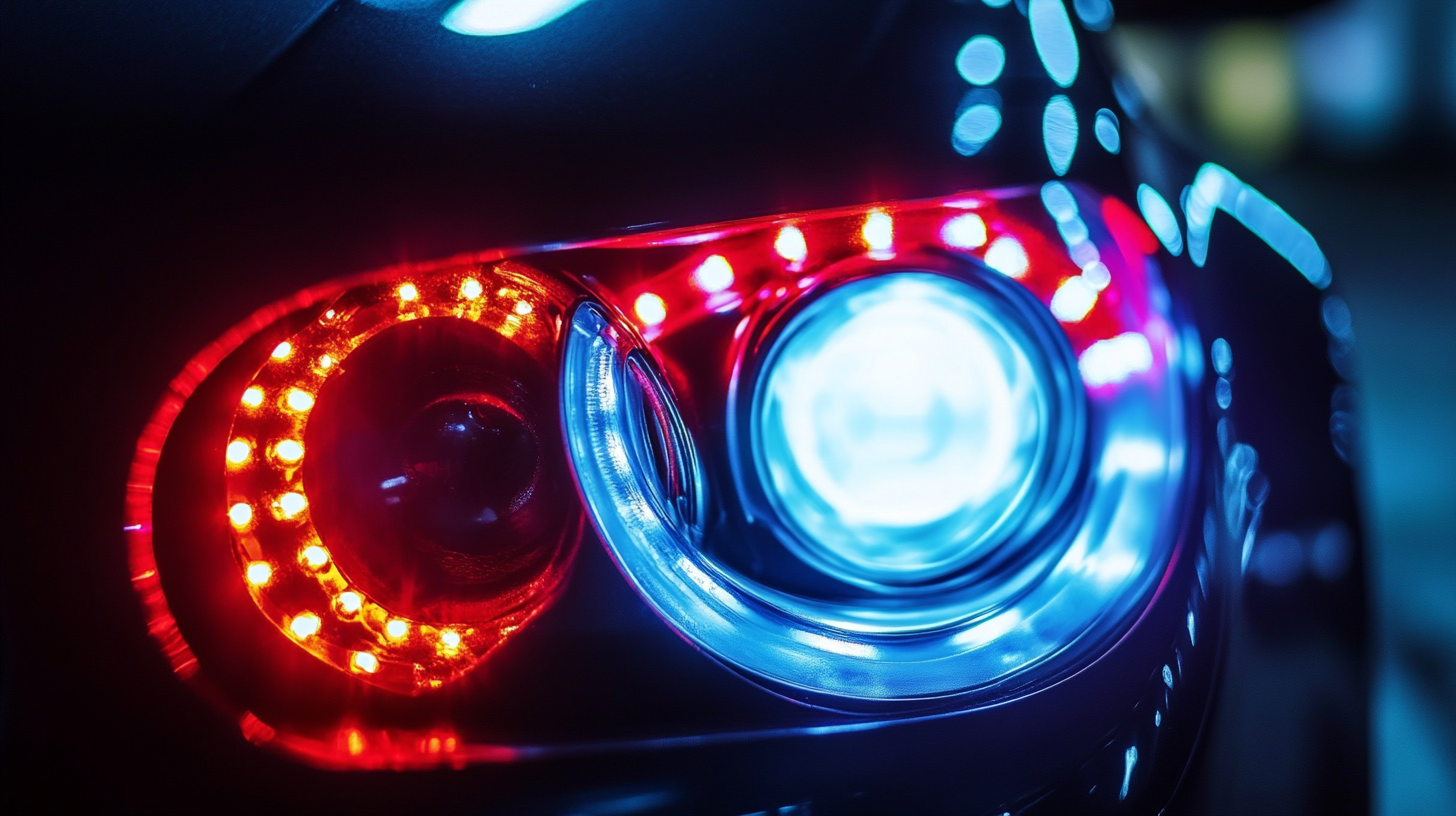In the rapidly evolving landscape of global trade, the automotive industry is increasingly turning to innovative technologies to enhance vehicle performance and safety. One such technology that has gained significant traction is Automotive LED Lights, which are transforming vehicular lighting systems with their energy efficiency, longevity, and superior brightness. According to a recent report by Markets and Markets, the global automotive LED lighting market is projected to reach $24.2 billion by 2025, growing at a compound annual growth rate (CAGR) of 10.1%. This surge is driven by rising consumer demand for enhanced visibility and design aesthetics in vehicles. As manufacturers focus on quality and certification standards, particularly in regions like China, which is becoming a leader in global exports of automotive components, understanding these industry benchmarks and insights is essential for stakeholders aiming to navigate and unlock the potential of global trade effectively.

The evolution of automotive LED light standards has been a crucial facet of global trade, reflecting the industry's response to rapid technological advancements and safety requirements. Initially, regulations were fragmented, with each region establishing its own set of criteria. This lack of uniformity not only complicated international trade but also posed significant challenges to manufacturers aiming to meet diverse legislative demands. As consumer expectations for safety and efficiency grew, so did the need for robust and harmonized standards.
In recent years, organizations such as the International Electrotechnical Commission (IEC) have made strides in creating comprehensive guidelines for automotive LED lights. These standards encompass various aspects, including performance, durability, and energy efficiency. As a result, manufacturers now benefit from clearer benchmarks and certifications that facilitate smoother entry into global markets. The collaborative efforts to standardize automotive LED light regulations not only enhance product quality but also foster innovation, enabling companies to stay competitive in an ever-evolving industry landscape.
The automotive LED lights industry operates within a landscape defined by various certifications that serve to enhance product credibility and ensure safety. Among the most recognized certifications are the ISO (International Organization for Standardization) standards, which set benchmarks for quality management systems. Adhering to ISO standards not only demonstrates a manufacturer's commitment to quality but also assures consumers that products meet international safety and performance criteria.

Moreover, certifications such as CE (Conformité Européenne) mark and RoHS (Restriction of Hazardous Substances) compliance are critical in the European market. The CE mark indicates that the product complies with EU legislation, while RoHS certification ensures that hazardous substances are minimized in production. These certifications are vital for building trust with customers and facilitating smoother entry into global markets.
By committing to these standards, manufacturers can demonstrate their dedication to producing reliable and safe automotive LED lighting solutions.
The automotive LED lights industry is rapidly evolving, driven by advancements in technology and increasing consumer demand for safety and efficiency. However, with this growth comes the necessity for stringent industry regulations that ensure the quality and safety of automotive products. Regulatory bodies play a crucial role in setting benchmarks that manufacturers must adhere to, thereby safeguarding consumers and enhancing overall market standards.
Understanding the impact of these regulations is essential for both manufacturers and consumers. Compliance with established industry standards not only mitigates risks associated with inferior products but also fosters trust in the marketplace. Consumers are increasingly aware of the importance of purchasing certified automotive LED lights that have undergone rigorous testing and evaluation. This awareness elevates their expectations regarding quality and performance, compelling manufacturers to innovate continuously and meet or exceed regulatory requirements. As a result, the relationship between regulation and consumer safety, along with product quality, becomes increasingly intertwined, driving a healthier automotive lighting market.
Navigating the intricate landscape of international automotive LED standards is essential for manufacturers aiming to compete in the global market. As the automotive industry increasingly shifts towards energy-efficient lighting solutions like LED technology, understanding the varying standards across different regions becomes critical. These standards dictate everything from light output and color temperature to safety regulations and environmental impact, and compliance is not merely optional—it’s a requirement for success. Each market, whether it's in Europe, North America, or Asia, has its own set of guidelines which can create complications for suppliers looking to expand their reach.
 Additionally, staying updated with certifications such as ECE, SAE, and ISO plays a pivotal role in ensuring quality and reliability in automotive LED lighting. These certifications not only enhance product credibility but also instill confidence among consumers and industry stakeholders alike. Companies that effectively navigate these standards through proactive engagement and robust quality assurance processes will likely find themselves at a competitive advantage. As the global automotive landscape continues to evolve, embracing these industry standards and certifications will be key to unlocking the full potential of the automotive LED market.
Additionally, staying updated with certifications such as ECE, SAE, and ISO plays a pivotal role in ensuring quality and reliability in automotive LED lighting. These certifications not only enhance product credibility but also instill confidence among consumers and industry stakeholders alike. Companies that effectively navigate these standards through proactive engagement and robust quality assurance processes will likely find themselves at a competitive advantage. As the global automotive landscape continues to evolve, embracing these industry standards and certifications will be key to unlocking the full potential of the automotive LED market.
As the automotive lighting industry evolves, several future trends are emerging that promise to reshape global trade dynamics. One significant trend is the increasing focus on energy-efficient LED technologies. As countries implement stricter environmental regulations, manufacturers are compelled to adopt LED solutions that minimize energy consumption and reduce carbon footprints. This shift not only enhances compliance but also opens up opportunities in markets prioritizing sustainability.
Another developing trend is the integration of smart lighting systems that boost vehicle safety and user experience. These systems utilize sensors and AI to adapt lighting conditions in real-time, improving visibility and reducing accidents. Such advancements encourage cross-border collaborations and drive import-export activities, as businesses seek compatible technologies.
